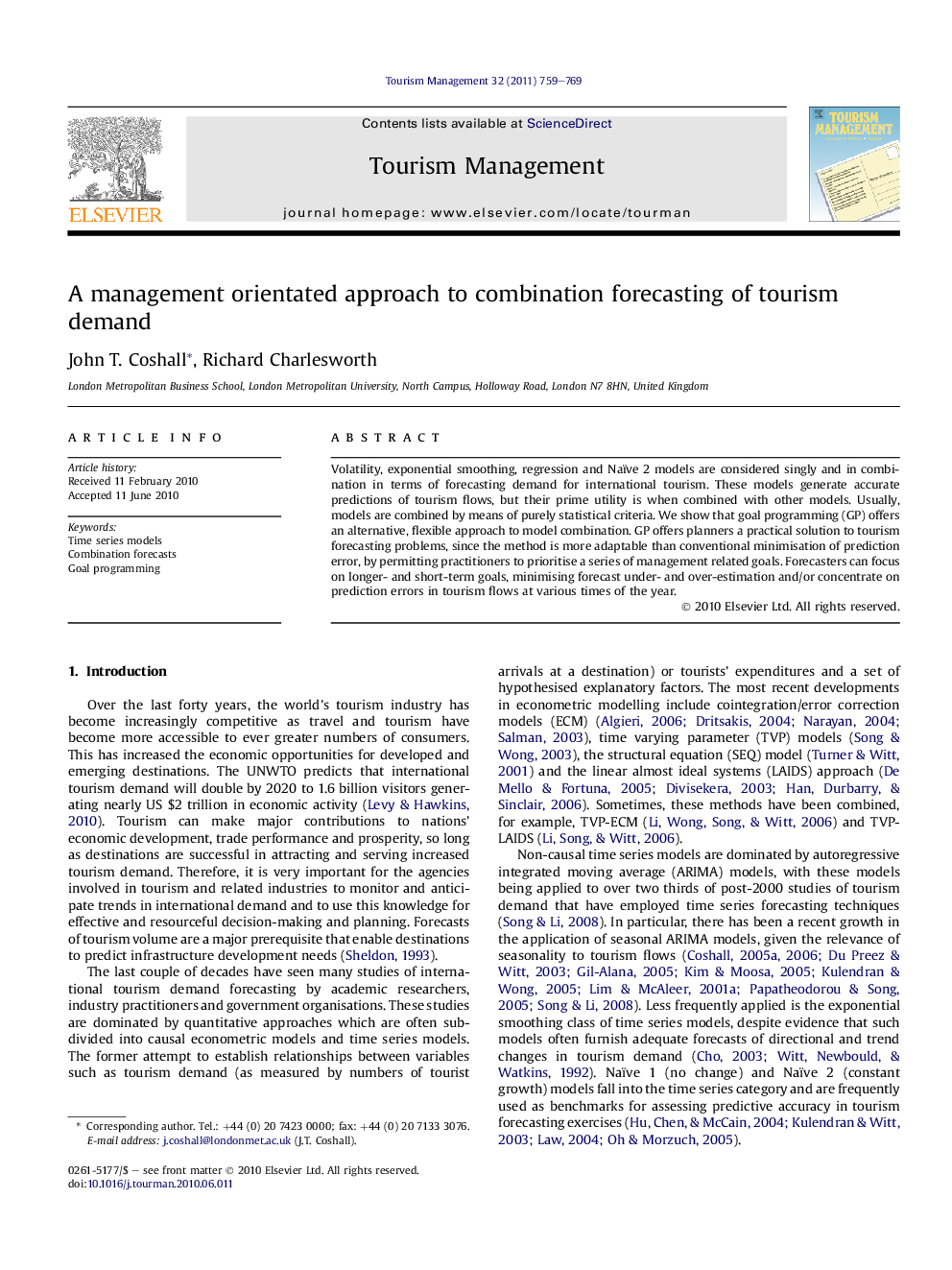| Article ID | Journal | Published Year | Pages | File Type |
|---|---|---|---|---|
| 1012241 | Tourism Management | 2011 | 11 Pages |
Volatility, exponential smoothing, regression and Naïve 2 models are considered singly and in combination in terms of forecasting demand for international tourism. These models generate accurate predictions of tourism flows, but their prime utility is when combined with other models. Usually, models are combined by means of purely statistical criteria. We show that goal programming (GP) offers an alternative, flexible approach to model combination. GP offers planners a practical solution to tourism forecasting problems, since the method is more adaptable than conventional minimisation of prediction error, by permitting practitioners to prioritise a series of management related goals. Forecasters can focus on longer- and short-term goals, minimising forecast under- and over-estimation and/or concentrate on prediction errors in tourism flows at various times of the year.
